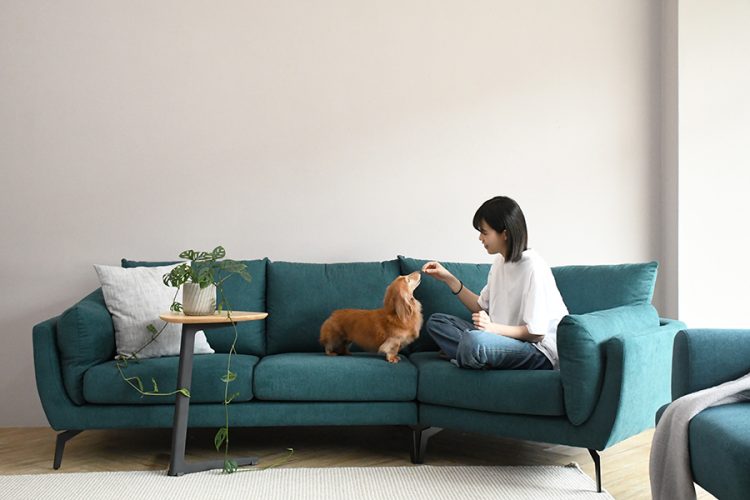One common challenge pet owners face, especially with dogs and cats, is their pets’ tendency to jump on furniture. Whether it’s the couch, bed, or kitchen table, it can become frustrating when your furry friends develop the habit of jumping on areas that are off-limits. While this behavior might be cute at first, it can quickly become a problem, especially if it leads to damage, dirt, or unwanted pet behavior in certain spaces.
Fortunately, with patience, consistency, and the right training techniques, you can teach your pet to stop jumping on furniture and encourage good household habits. In this article, we’ll explore why pets tend to jump on furniture, how to discourage the behavior, and provide strategies to help your pet learn proper boundaries.
Why Do Pets Jump on Furniture?
Before diving into training, it’s important to understand why pets, especially dogs and cats, love to jump on furniture. Here are some common reasons:
1. Seeking Comfort or Attention
Pets often jump on furniture because they find it cozy and comfortable. Sofas and beds are soft and elevated, making them attractive spots for your pet to curl up or get closer to their human companions. In many cases, pets may jump on furniture to get attention from their owners—whether it’s a pat, a cuddle, or just being close to you.
2. Curiosity and Exploration
Pets, particularly young ones, are naturally curious. They may jump on furniture to explore their environment. For dogs, this behavior may be driven by a desire to get a better vantage point or investigate smells and sounds. Cats, being agile climbers, may view furniture as an elevated perch that provides an opportunity to survey their surroundings.
3. Separation Anxiety
If a pet has a tendency to jump on furniture when you’re not around, it might be a sign of separation anxiety. Pets often seek out areas that smell like their owners or that provide comfort during times of stress.
4. Reinforced Behavior
In some cases, pets learn to jump on furniture because they receive a reward for doing so, even if it’s just your attention. If a pet is allowed on the couch once, they may be encouraged to do it again and again. This positive reinforcement makes the behavior more likely to persist.
5. Habit
For many pets, jumping on furniture becomes a habit. They may not understand that jumping on the couch or bed is undesirable. Over time, this becomes part of their daily routine.
How to Train Your Pet to Stop Jumping on Furniture
Training your pet to stop jumping on furniture requires consistency, patience, and positive reinforcement. Here are some effective strategies you can use to discourage this behavior and teach your pet better household manners.
1. Set Clear Boundaries
It’s crucial to establish clear boundaries from the start. This means deciding which pieces of furniture are off-limits and sticking to it consistently. If you allow your pet to jump on the furniture at certain times but not others, it can cause confusion and make training more difficult.
- Be Consistent: If a piece of furniture is off-limits, don’t allow exceptions. Every time your pet attempts to jump on it, reinforce that it is not allowed. Inconsistency will confuse your pet and hinder the training process.
- Use the Same Commands: Use clear and consistent commands, such as “off” or “down,” when you want your pet to stop jumping on furniture. Saying the same word every time will help your pet understand what behavior you are expecting.
2. Redirect Their Attention to a Specific Spot
One of the most effective ways to discourage your pet from jumping on furniture is by giving them a designated spot to sit or lie down, such as a pet bed or a blanket. This allows your pet to have a comfortable alternative and helps them learn where they are allowed to be.
- Positive Reinforcement: Whenever your pet goes to their designated spot (such as a dog bed or a cat tree), reward them with treats, praise, or affection. Positive reinforcement will help them associate the designated spot with something pleasant.
- Redirect Behavior: If your pet tries to jump on the furniture, gently guide them to their designated spot and reward them when they settle there. Over time, they will begin to understand that this is their “spot” and the couch or bed is off-limits.
3. Use Deterrents to Discourage Furniture Jumping
If your pet continues to jump on the furniture despite your training efforts, you can use harmless deterrents to make the furniture less appealing.
- Double-Sided Tape or Sticky Paws: Many cats and dogs dislike sticky surfaces. You can apply double-sided tape to the areas where your pet tends to jump. When they land on the tape, it will be uncomfortable for them, encouraging them to avoid that spot.
- Aluminum Foil or Plastic Mats: Cats, in particular, dislike the sound and feel of aluminum foil. You can place it on your furniture to deter your cat from jumping on it. Alternatively, you can purchase plastic mats with raised nubs, which can be placed on the couch or bed to make it uncomfortable for your pet to land on.
- Pet Repellent Sprays: There are non-toxic sprays designed to deter pets from jumping on furniture. These sprays usually have a smell that pets dislike, such as citrus or herbal scents, and they can be sprayed on the furniture to keep your pet away.
4. Reinforce “Off” or “Down” Commands
Teaching your pet to respond to specific commands, like “off” or “down,” is essential to stopping unwanted jumping behavior. Here’s how to train your pet to get off the furniture on command:
- Step 1: When your pet is on the furniture, calmly say the command “off” or “down” while gently guiding them to the floor (you can use a leash if training a dog).
- Step 2: As soon as your pet gets off the furniture, reward them with a treat or praise.
- Step 3: Practice this repeatedly. Consistency is key, so make sure to reward your pet every time they get off the furniture when asked.

5. Create a Comfortable Alternative
It’s important that your pet feels comfortable in their designated spots. If you want to prevent them from jumping on the furniture, make sure they have a cozy and appealing alternative.
- Dogs: Provide a comfy dog bed or blanket in a quiet corner of the room, preferably close to where you spend your time. Add some toys or a treat to make it more enticing.
- Cats: Provide scratching posts, cat trees, or cushioned perches near windows to satisfy their climbing and observation instincts.
6. Use Positive Reinforcement
Rewarding good behavior is one of the most effective training methods. When your pet stays off the furniture and lies on their designated bed or spot, make sure to reinforce this behavior with positive rewards.
- Treats: Give them a small treat immediately after they follow your “off” command and settle in their designated spot.
- Praise: Use a positive, enthusiastic voice to praise your pet whenever they listen to your commands. This will help them associate good behavior with positive attention.
7. Avoid Punishment
Punishing your pet for jumping on the furniture is generally not effective and can harm your relationship with them. Instead of yelling, physically pushing, or hitting your pet, focus on redirecting their behavior and providing positive alternatives. Punishment can confuse your pet, causing stress or fear, which may lead to more unwanted behavior.
8. Be Patient and Consistent
Changing behavior, especially when it’s become a habit, takes time. Be patient and consistent in your training efforts. Every time your pet jumps on the furniture, calmly guide them off and reward them when they stay on their designated spot.
Don’t get discouraged if progress is slow—training takes time, and some pets may need more repetitions than others to fully understand what is expected.
Conclusion
Training your pet to stop jumping on furniture and develop good household habits is an achievable goal with consistency, positive reinforcement, and patience. By setting clear boundaries, providing alternatives, and using effective deterrents, you can teach your pet to respect the furniture and maintain good behavior in your home.
Remember that every pet is different, so be patient with the process and celebrate small victories along the way. Over time, your pet will learn where they are allowed to go, and you’ll be able to enjoy a more peaceful, furniture-friendly household.























































